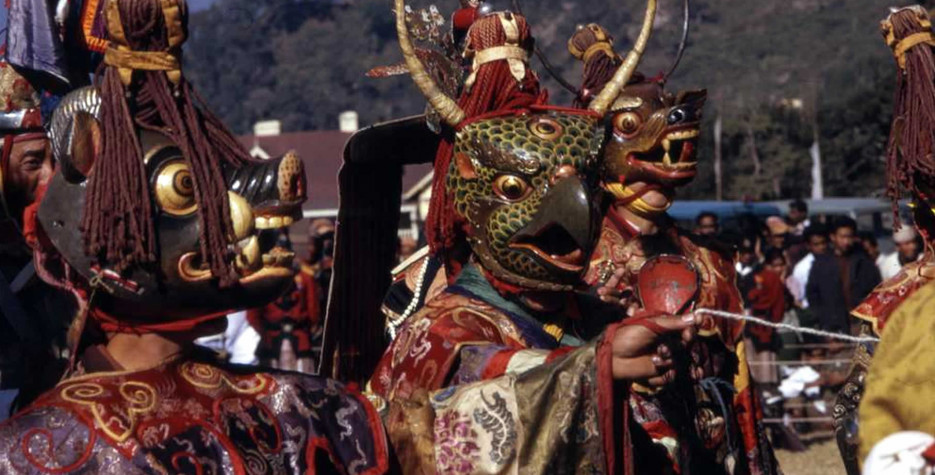When is Kagyed Dance
Kagyed or Kagyad is a Buddhist festival held in parts of northern India, particularly Sikkim. It is a regional public holiday in the state of Sikkim.
The Kagyed dance is performed on the 28th and 29th day of the 10th month of the Tibetan Calendar, two days before the start of Losoong, Sikkimese New Year. This holiday falls in December or January in the western calendar.
About Kagyed Dance
One of the most popular Buddhist festivals, Kagyed Chaam, is a celebration that is marked by masked monks performing some rigorous dance moves, symbolizing the destruction of all the evil and negative forces, thereby bringing in peace and prosperity for one and all in the upcoming new year.
Kagyed means the oral transmission of the eight Tantric Gods found in Tantric Buddhism. Kagyed Chham is a word of Bhutia origin. ‘Ka’ means ‘oral transmission’, ‘Gyed’ means ‘eight’ and ‘Chham’ means ritualistic dance.
Various important scenes from Buddhist mythology are enacted during this dance, which eventually comes to a close by burning off effigies made with flour, wood and paper. The festival is not only held in high regards by the locals but, also by international tourists who believe in the teachings of Buddha and find seeing this dance as an eternal blessing.
The history of cham dances dates back to the times of Guru Padmasambhava, the founder of Tibetan Buddhism in Sikkim, who is said to have performed this dance to a vanquish a demon from this holy land.
A number of variants of these cham dances are performed on different festivals, with one thing remaining common in all i.e. the masks representing scores of human, deities and animal faces enacting an interesting story from the Buddhist mythology.


